Sacred Heart at Monastery Lake sits on ground that has a lengthy history that goes back well before the Priests of the Sacred Heart purchased it in 1929.
The majority of residents at SHML are lay people who live in two of the three wings of the apartment complex; the north wing is reserved for SCJs. One of those SCJs is Fr. John Czyzynski, SCJ, who – as a student, educator, and provincial superior – has a lengthy history with the property. On Friday, May 13, he offered a presentation in the SHML dining room to share background on the property. Evidently there was a lot of interest in the topic – the dining room was filled just about to capacity to hear the 45-minute presentation.
Fr. John’s text appears below:
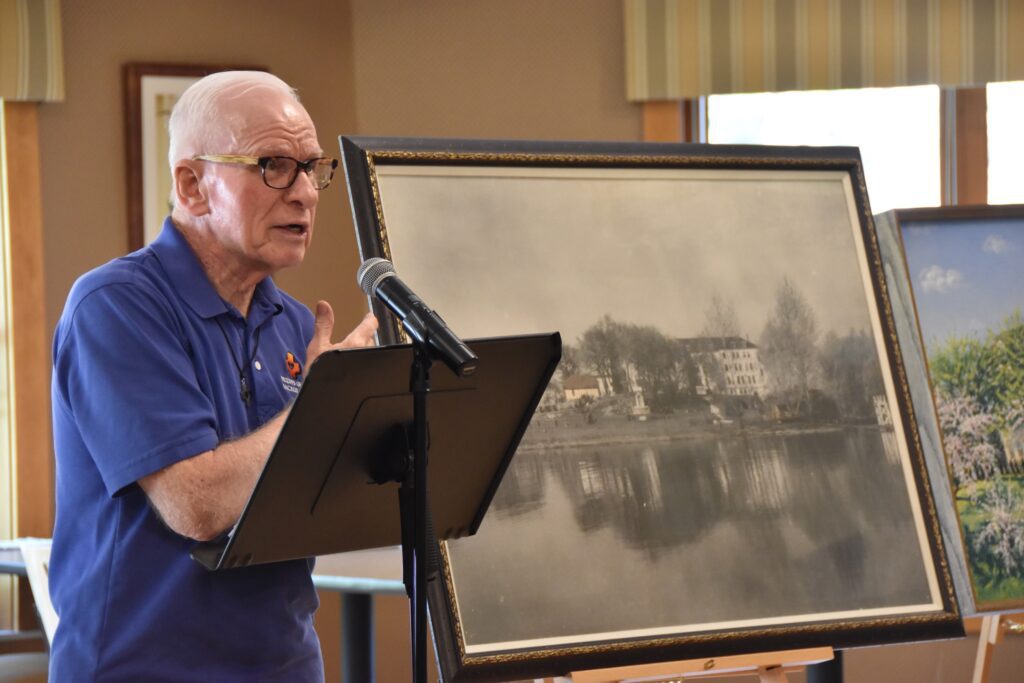
1898 (1903) – 1929
Before I say anything about the buildings that were on this property, I just want to share a bit of information about the site itself. I have been told that before any immigrants came to this place it was a settlement for Native Americans. The lake came up to the top of hill on which this building now sits. At one time there was a dam that controlled the flow of this spring-fed lake. When the dam broke the lake receded to where it is at the present time. The water of this spring-fed lake runs under the library that is part of the structure across the street [Sacred Heart Seminary and School of Theology] and that water flows under this building as well.
Before the Priests of the Sacred Heart owned this property, the Dominican Sisters of the Perpetual Rosary owned it from 1903-1929 and had a convent/monastery built on the land. There is actually some question about whether the Sisters may have actually owned the property since 1898 or 1899. One of our most reliable sources indicates it was 1899.
In 1929 the Sisters sold the property to the Priests of the Sacred Heart. The Dominicans wanted to move closer to the city of Milwaukee. The Sisters moved to a place on 68th and Wells in Milwaukee where they had a shrine and a senior residence. They then sold that place and moved to a residence on Kimberly Avenue in Greenfield, WI. There are four Sisters living there. This community has a great devotion to the rosary and at least one member of the community is praying the rosary perpetually (24 hours a day).
Members of the Dominican community who died while they owned the property where SHML is now were buried in a cemetery behind the original building. On November 28, 1970, the Priests of the Sacred Heart were given permission to build a mausoleum. Once the mausoleum was finished, the bodies of the Sisters and their chaplain were exhumed and transferred to the SCJ mausoleum along with the bodies of all the SCJs who had been buried in the cemetery. All the remains of the Sisters and that of their chaplain were placed in the space at the top right-hand corner of the front center section of the mausoleum. [The mausoleum is behind Sacred Heart Monastery]
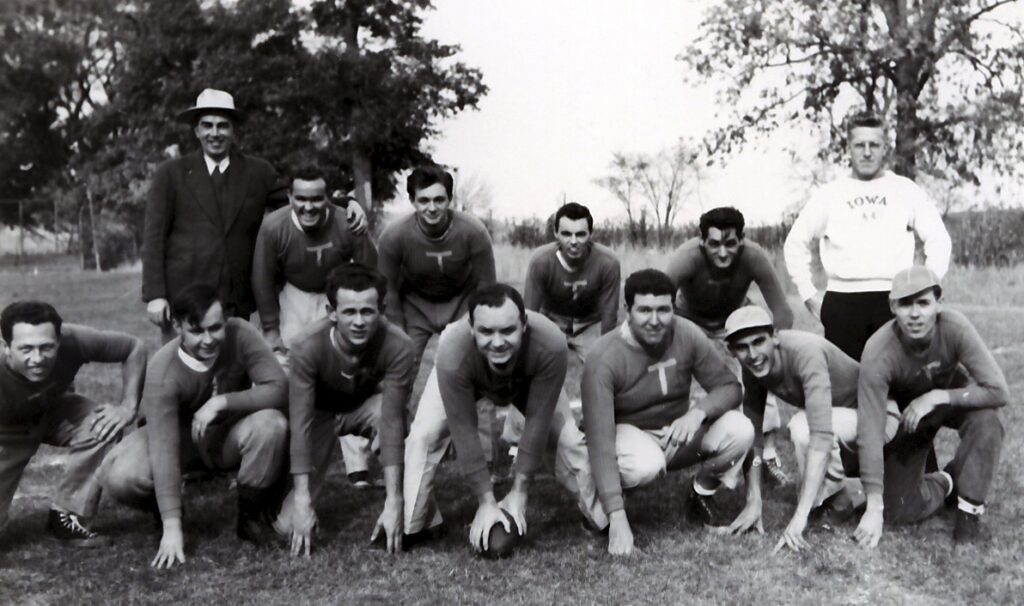
1929-1934: Sacred Heart Mission House
During the years 1929-1934, immediately following the purchase of the property by the SCJs, the building served as the novitiate for the community until the novitiate was moved to Sainte Marie, Illinois.
The building was called “Sacred Heart Mission House”. When the novitiate program was moved to Sainte Marie, that title – Sacred Heart Mission House” – moved with the program and the building that was purchased from the Dominican Sisters began to be called “Sacred Heart Monastery”. That title is deceptive because the Priests of the Sacred Heart are not monks. We are an apostolic/ active community. The title “monastery” may have been carried over from the fact that the original owners, the Dominican Sisters, were more of a monastic/cloistered religious group. Another possible explanation for the use of the word “Monastery” is the fact that the first SCJs who lived in the building were from Germany. The German word for a residence for religious is “kloster” and it is translated as monastery or convent.
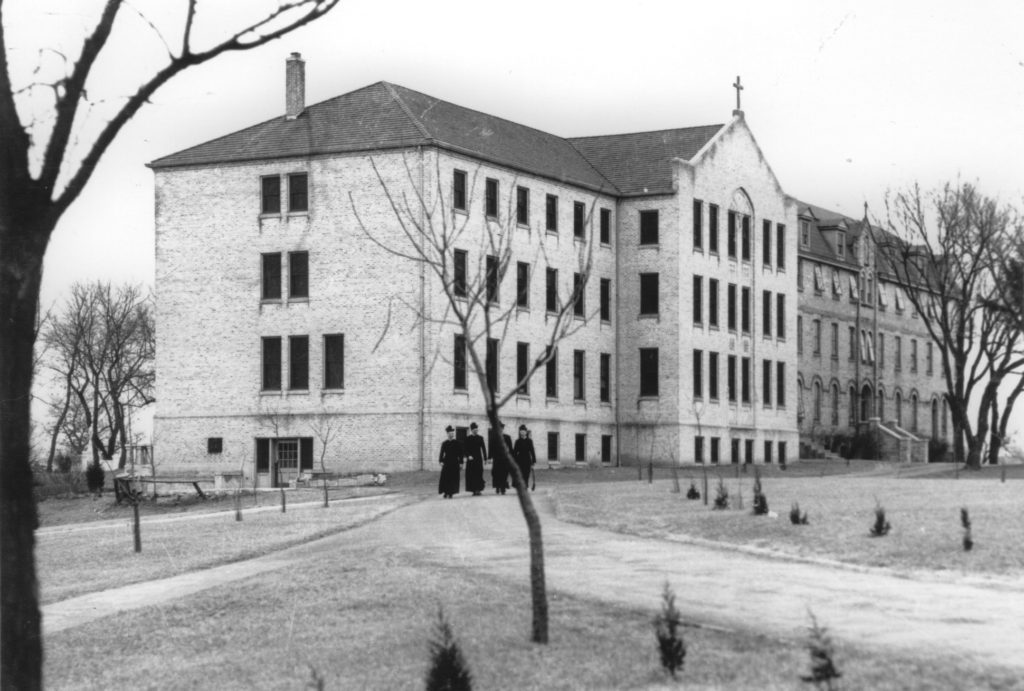
1932-1955: Sacred Heart Monastery
From 1932 until 1955 the SCJs used the original building for college students who majored in philosophy. That was just one of the programs. In 1955 the college/philosophy program was moved to Honesdale, PA, where the SCJs had built Kilroe Seminary of the Sacred Heart Kilroe being was the name of the family that donated the property to the community.
From 1932 until 1955, besides the college and philosophy programs, the original building also housed those pursuing theological studies – the last four years of study before ordination to the priesthood.
As noted earlier in 1955 the college/philosophy programs were moved to Pennsylvania so from 1955 until 1968 only those studying theology lived in the original building.
In 1968 the building across the street – Sacred Heart Seminary and School of Theology – was completed and the theology program was moved to that location. Originally it was called Sacred Heart Monastery, the name having been transferred from the original building that was on the east side of Highway 100.
1933: Addition of a third floor
The original building which was purchased had two stories. In 1933 the SCJs literally “raised the roof” and added a third story. They prayed that no storms would come during the construction because the building was totally exposed to the weather!
Once the construction was done and the seminarians moved in, they gave nicknames to various parts of the building. The main corridor on the third floor was called: “42nd Street.” The shorter wing on the south side had walls that were so thin that it was called “Cardboard Alley.” If anyone in that section sneezed, all of Cardboard Alley would call out “God Bless you.”
At times bats got into the building. This would be an occasion for SCJs and students to arm themselves with towels and tennis rackets and get rid of the bats. The poor bats didn’t have a chance.
1940: Addition of a new wing
In 1940 a new three-story wing was added onto the northern end of the original building. This was used for classrooms, offices, common rooms and bedrooms. The wing that was added on was larger than the original building.
1940-1968: Sacred Heart Monastery (The Mother House)
The official name of the old building was “Sacred Heart Monastery”, but it was affectionately known as “The Shabby Abbey.” It was here that those who joined the SCJs with the hope of being ordained and serving as priests received their college, philosophical and theological education.
There used to be a vocation club. Young men who lived in the Milwaukee area came here to learn about the Priests of the Sacred Heart. Dn. David Nagel, SCJ, was one of those who first got in touch with us through the vocation club.
The lake (Monastery Lake) provided an opportunity for recreation for the seminarians. In the summer they could go swimming. There was a bath house. The concrete slabs on the lake front indicate the location of the old bath house. In the winter, seminarians would shovel off the snow and play hockey or just skate. There was a place to play volley ball on the shore.
The Priests of the Sacred Heart own one third of the property under Monastery Lake; the body of water belongs to the State of Wisconsin, as do all lakes and rivers.
The lake is spring-fed. There is an odd phenomenon connected with the lake. The stream that forms an outlet for the lake flows north. Most rivers and streams of water flow south.
The stream flows into Whitnall Park. Most of the land around the lake is wetlands which are governed by a conservancy so that the land is preserved/safe-guarded.
The German SCJ priests and brothers, and those first men from the US who joined the community, planted trees in the area between the lake and the building which made it possible for the land to be more stable. Some of the trees need to be taken down now but there is a plan to replace them.
Layout of the property
There was an orchard in front and along the south edge of the building. A mission bell used to hang from the back wall of the original building. It was rung when the community would gather for a departure ceremony for men who would be going to the foreign missions. The bell has been moved across the street and hangs in front on the main entrance under a small structure which was built to house it. At times it is used to mark the occasion when seminarians complete their studies and return to their home dioceses or to their own religious communities. There was a gas pump near the southeast corner of the original building.
Fr. Gole, a diocesan priest from Slovenia, was hired to teach Scripture and Theology because not many of the early SCJs had advanced degrees allowing them to teach such courses. Fr. Gole had a garage at the northeast corner of the building.
Across a road that ran around the building and just a bit north of the SCJ residence was the Convent that housed the Benedictine Sisters who cooked and did the laundry and such tasks for the SCJ community.
A bit further north of the convent was the grotto to our Lady of Lourdes. There were trees and lawn that surrounded the convent area.
There was a path leading to the Sacred Heart shrine. To the south of that area was the cemetery. In 1965, since more room was needed for dormitory space for seminarians, mobile homes were placed in that area as we awaited the construction of the new building across the street.
Further down towards the lake there was a shrine/grotto dedicated originally to the Blessed Virgin Mary but which is now dedicated to St. Joseph. It fell into disrepair but has been restored.
There was a garage that held two to three cars.Down the hill and further south there wasa handball court, a combination basketball and tennis court, and a baseball/football field depending on the season, and more orchards.
Bookstore
After 1968 when the seminary program was moved across the street, the original building with its added wing became a bookstore. A gentleman who used to work for the Bruce Publishing Company in Milwaukee helped the SCJs to set up the bookstore. Later the bookstore was moved to Butler, WI. Later, the bookstore was housed in the building across that street to the south of the seminary building. Soon the bookstore was put out of business and that structure is used now as our provincial office headquarters and the Vocation Central office.
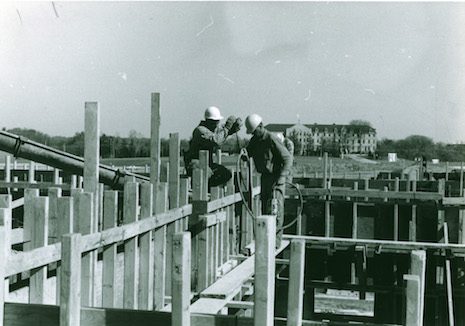
How the land for the building across the street was obtained
In the early days of Sacred Heart Monastery more land was needed to grow food. The SCJs approached the farmer who owned the land across the street from the original building. He did not want to sell the land. The story is told that Fr Kiefer, who was then the provincial superior, buried a statue of the Sacred Heart on the property. The farmer had a change of heart and donated the property to the SCJs. Fr. Kiefer was provincial twice: from 1934 to 1941 and from 1947 to 1955. So I am presuming this took place during one of his terms, but I am not sure when.
1981: Demolition of the original building
Sometime around 1981 the SCJs sold the land with the original building still standing at this location to developers who planned to build condos on the site. The original building was razed. Bricks and copper were salvaged. The developers plan never came to fruition and after many hassles the property on which Sacred Heart at Monastery Lake stands was returned to the Priests of the Sacred Heart.
The convent
Around the year 1943, the Benedictine Sisters began to prepare meals, do laundry and other chores for those who lived in Sacred Heart Monastery. From 1943 to 1959 the Sisters lived in a farm house across Highway 100. A story is told that one of the Sisters was injured by a truck as she tried to cross Highway 100. This highway used to be a three-lane road. In 1959 a convent was built for the Sisters. It was just north of Sacred Heart Monastery just across the little road that circled the monastery.
The Benedictine Sisters lived there until 1968. When the new building was completed across the street and the residents of Sacred Heart Monastery moved in, the Sisters moved into the residence that today is called Dehon House. It is located in the woods just north of the seminary/school of theology.
From 1968 until 1981 the convent was used in various ways: 1) as a residence for the provincial superior of the SCJs and later 2) as a residence for faculty of SHSST.
In 1981 that property was sold. From 1981 until 1989 the convent building stood empty.
1989-2009: Villa Maria
Before I say a few things about a structure that was called “Villa Maria,” a residence for senior SCJs, I want to point out that two SCJ brothers: Br. Ray Kozuch and Br. Jim Muller were pioneers in developing a program of care for senior religious. Br. Jim died at a young age, but Br. Ray headed up the senior care program for the Priests of the Sacred Heart and was often consulted by other religious communities who wanted to set up programs of care for their seniors, and wanted to take advantage of Br. Ray’s expertise in these matters.
During the years 1986-87 plans were made for a residence for senior SCJ religious. A building was erected north of the convent building that could house 18 residents. The convent building was then connected to the new structure. The convent part of the structure held some common areas, the chapel and office space. That structure was completed in 1989 and was called Villa Maria. A magazine once arrived in the mail at this residence addressed to: “Bill and Maria.”
In 2009 that building was razed to make room for the construction of this present building, Sacred Heart at Monastery Lake.
Grottos and Shrines
The Sacred Heart shrine directly behind this building was built in 1935 by SCJ seminarians, with financial assistance from various benefactors. It is in the same location it occupied when it was first built behind Sacred Heart Monastery. The current statue came from a residence the SCJs owned in Great Barrington, MA. The statue used to be on top of the chapel building at Great Barrington.The Lourdes grotto dedicated to the Blessed Virgin was built by SCJ religious in 1939.
There is a shrine dedicated to St. Joseph that is located down the slope behind the building.
It is about 30 yards from the edge of the lake. The shrine was originally dedicated to Our Lady. The shrine fell into disrepair for a while, but the area has been cleaned up and a statue of St. Joseph has been placed in the niche. The date of the construction of this shrine is unknown.
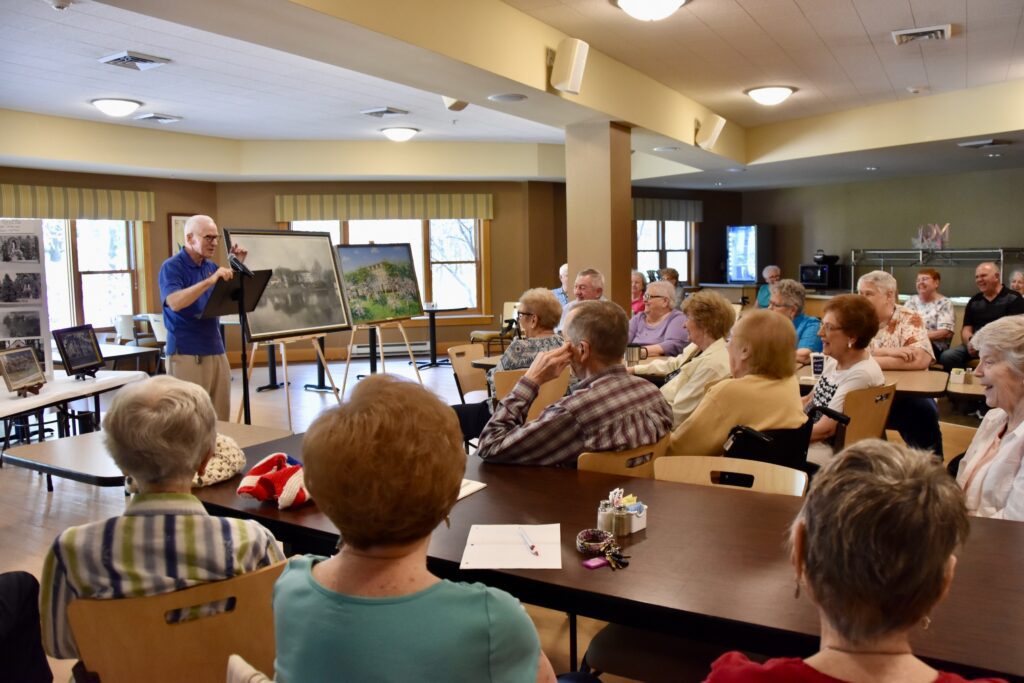
Sacred Heart at Monastery Lake
Construction of this building began in 2009. Once the construction was completed it was ready for occupancy. In 2011 the Priests of the Sacred Heart moved into the northern section. Then lay folks moved into the center section in 2012 and the southern section in 2013. Dn. David Nagel and Br. Frank Presto were the two SCJs who were most significantly involved in the construction of this building.
Worthy of note is the fact that the tabernacle in the main chapel came from Divine Heart Seminary’s chapel. Divine Heart Seminary was a high school seminary run by the Priests of the Sacred Heart in Donaldson, IN from 1935 to 1979.
The designs for the watercolors on the windows at the back of the chapel at Sacred Heart at Monastery Lake are based on some artwork depicting the litany of the Sacred Heart; the artwork which was created by one of our German SCJs, Fr. Angelico Koller. The artwork used to be displayed in our house in Great Barrington. At this time, seven of the stained glasses windows are in the dining room at Sacred Heart Seminary and School of Theology and one is in the recreation room of Sacred Heart Monastery.
There is room for 36 senior Priests of the Sacred Heart on the first three floors of the north wing. There is room for 10 SCJs who are still active in ministry to live in community on the fourth floor. There are 138 apartments for senior residents in the middle and southern sections of the complex. Twenty percent of the apartments are reserved for low-income residents.
Fr. John thanks Dn. David Nagel, Br. Ray Kozuch and Fr. Wayne Jenkins for helping in developing this history.
